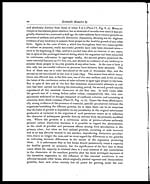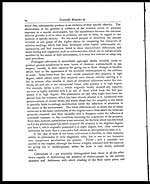Medicine - Institutions > Army health reports and medical documents > Scientific memoirs by medical officers of the Army of India > Part VIII, 1894 > 1 - Results of continued study of various forms of comma-bacilli occuring in Calcutta
(29) Page 23
Download files
Individual page:
Thumbnail gallery: Grid view | List view

Medical Officers of the Army of India.
23
ditions, or are only capable of giving rise to unhealthy and abortive growths.
The very fact that under the influence of common, like conditions, certain forms
should have retained the capacity for vigorous growth, whilst others have par-
tially or totally lost it is certainly not in favour of the assumption that all of
them are of essentially identical nature, and the resemblances or rather the want
of characteristic distinctions presented by unhealthy and abortive growths can-
not be regarded as evidence of any appreciable value. Where the capacity for
growth has not been entirely lost, as in many cases it appears to have been, but
is only to a greater or less degree impaired, the degree of resemblance present-
ed by cultivations of the individual forms varies directly with the degree of
abortiveness of the growths; where the developments are very feeble and the
elements composing them are unhealthy and to a great extent in a state of
involution, very considerable resemblances may be present both in regard to the
growths generally and to the characters of their constituents, but just in propor-
tion to the degree in which they show indications of greater vigour, differ-
ences in their general habit and in the characters of their constituent elements
become more and more conspicuous. I have never succeeded in re-establishing
the original vigorous, healthy, bright yellow growths of form β , which I de-
scribed in my previous paper, and which died out during my absence in Europe
in 1891, and, save in one or two instances, have only obtained purely abortive
growths which certainly closely resembled equally unhealthy growths of form α .
In two instances, however, the developments in cultures of these two forms,
although by no means vigorous, were of relatively healthy character, and coinci-
dently with this, differences between the two growths began to manifest them-
selves, the growth of α being relatively thin and of a dirty brownish tint, and
that of β considerably thicker and of an ochreous colour. Other differences, too,
were present, the elements in α being embedded in an adhesive, gelatinous basis,
and presenting more or less the characters normal to those in agar-agar cultures
of the same form, whilst those in β were quite free and diffusible and had assumed
the form of thick, short, straight or only slightly curved rods entirely dissimilar
to those in α . In order that the growth furnished by all the different forms of
choleraic comma-bacilli should present certain points of resemblance it is only
necessary that they should be sufficiently abortive. If this be secured we find differ-
ences in the consistence and colour of the growths as a whole and differences in
the morphological characters of their constituent elements gradually diminishing,
until, when the capacity for development has fallen to a minimum, there is nothing
to distinguish the various growths from one another save the fact that when
employed as means for the inoculation of other and more favourable media they
anew give rise to distinct and characteristic developments. Continued culti-
vation in neutralised agar-agar media certainly produces a common effect on
most forms of choleraic comma-bacilli in diminishing their capacity for healthy
growth on potatoes, but the resemblances presented by the abortive growths
Set display mode to: Large image | Zoom image | Transcription
Images and transcriptions on this page, including medium image downloads, may be used under the Creative Commons Attribution 4.0 International Licence unless otherwise stated. ![]()
| Permanent URL | https://digital.nls.uk/75002089 |
|---|
| Shelfmark | IP/QB.10 |
|---|---|
| Additional NLS resources: | |




